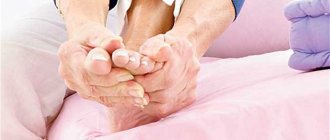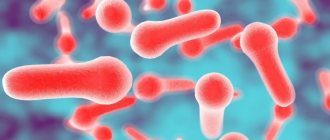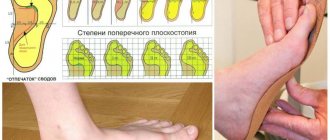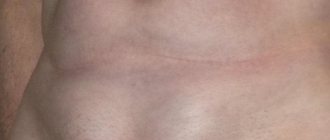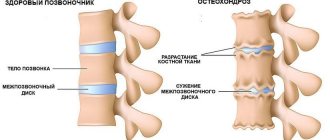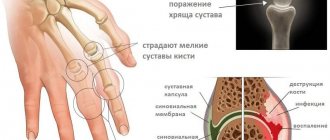The muscles of the legs and feet are subject to involuntary contractions called spasms or tonic cramps. This condition is accompanied by acute pain, which can last 3-5 minutes, and a feeling of severe tension, “petrification” of the muscles. Coping with cramps is easy if you know their causes and several effective treatment methods.
My leg cramped!
Cramps, including in the legs, are involuntary muscle contractions, usually accompanied by severe pain. Moreover, spasms can vary greatly in the type of manifestation, and are observed not only in the legs.
For example, there are seizures that look like stereotypical rapid movements. A typical example is a nervous tic of the eyelid. This type of spasm, called clonic, is a consequence of short-term contraction and relaxation of individual muscle groups.
But there are also tonic seizures, which are more familiar to many of us. This is when the muscles seem to harden for a few minutes, and this condition is accompanied by severe pain. As a rule, such involuntary contractions are local in nature. Most often, cramps occur in the legs and calves. It happens that the hip and foot suffer. Leg cramps can occur at different ages, but more often people of the middle and older generation are susceptible to them.
The most severe and life-threatening cramps are when almost all muscles contract. They are called generalized and are often accompanied by loss of consciousness. Such spasms are the result of serious illnesses and require immediate medical attention.
Perhaps one of the most common causes of leg cramps is a violation of the biochemical or electrolyte composition of the blood. Imbalances can occur due to a lack of calcium, magnesium and potassium in the body, as well as a lack of vitamin D. All of these substances help regulate muscle activity and control nerve impulses. Why do we lose essential microelements?
- Taking a number of medications , for example, adsorbents and antacids used to treat heartburn, can interfere with the full absorption of magnesium and calcium. And diuretics have a side effect in the form of removal of potassium and magnesium from the body.
- When stressed, the body begins to intensively produce the hormone cortisol. One of its side effects is a deterioration in calcium absorption in the intestines and increased excretion by the kidneys.
- lack of magnesium and calcium , as a rule, occurs during pregnancy, when the expectant mother needs twice as much of these beneficial microelements as usual. Seizures can develop against the background of inferior vena cava syndrome, in which the movement of venous blood from the lower extremities worsens.
- Eating too much protein is also a cause of calcium deficiency. The fact is that the human body for the most part absorbs glucose from carbohydrates, and not from fats, for energy purposes. If there is little glucose in the blood, then fat reserves are used. This, in turn, contributes to the appearance of ketones in the blood. If they are in excess, ketosis can develop, which increases the risk of kidney stones, since a large amount of calcium is excreted through the urine.
- When you sweat a lot, your body loses the potassium it needs, so leg cramps are quite common in hot weather or during high-intensity sports training.
- vitamin D deficiency due to long winters and lack of sunlight. In turn, a lack of vitamin D leads to poor absorption of calcium.
According to statistics, more than 85% of people on the planet suffer from recurrent leg cramps to one degree or another.
Treatment
Let's look at how and how to treat leg cramps. The main methods used are medications and strengthening procedures in the form of physiotherapy, therapeutic exercises and massage. If desired, you can supplement the therapy with traditional medicine recipes.
Drug therapy
Drug treatment of leg muscle spasms begins with the use of specialized drugs. Before starting it, you should consult a doctor to identify the specific type of deficiency condition:
- When there is a lack of microelements, it is necessary to take products with potassium and magnesium - Panangin, Asparkam, Magnele B6, Magnerot;
- For anemia, iron supplements are indicated - Sorbifer Durules, Aktiferrin;
- If vitamin deficiencies are detected, multivitamins are prescribed - Vitrum, Complivit.
In order to choose a medicine for seizures, you need to consult a doctor. When the doctor determines the nature of the underlying pathology, therapy can be expanded with painkillers, blood thinners and vascular drugs.
Physiotherapy
Treatment of leg cramps can be supplemented with some physical therapy methods. These methods eliminate not the symptom, but the very cause of the underlying disease - providing a general and local effect. The most popular are:
- Drug electrophoresis;
- Ion therapy;
- Warm-up sessions;
- Magnetotherapy;
- Shock wave therapy.
To obtain a referral, you must contact your attending physician - the doctor determines the approximate number of procedures, periodically monitoring the patient. Sessions are held 2-3 times a week for 15-20 minutes. The first results are observed after a month, provided that all the specialist’s recommendations are followed.
Medications and physical therapy for leg cramps
Physiotherapy
With the right approach, you can get rid of leg cramps at home in this way, but to achieve the full effect, you need to supplement the program with massage and observation by your doctor. Gymnastics includes a set of exercises to develop muscles that are subject to spasms:
- If there is a cramp in the legs, tiptoeing and swimming are recommended;
- If you are worried about spasms in the sole area, moderate running and special exercises for your toes are a good idea;
- Cramps in the hips are treated with special gymnastics and hoop exercises.
Interesting!
For all types of cramps, water procedures have worked well, especially aqua aerobics - but only in warm water and in a specially equipped pool. These exercises do not overload the muscles, improve blood flow and cellular nutrition.
Massage
The purpose of massage has a very beneficial effect on the condition of the muscles. The best option is to warm up your calves and soles. This treatment can be done at home, but it is better to consult a professional. If its duration is 20 minutes or more, the effect of such procedures is observed after 2-3 weeks. Sessions should be attended every other day, alternating them with therapeutic exercises.
ethnoscience
Recipes from traditional healers will perfectly complement the treatment of leg cramps. Mostly medicinal herbs, rubs or compresses are used. Popular recipes:
- Rubbing with spices - red pepper or ginger is suitable, which should be rubbed into the skin of the problem area. Returns sensitivity, improves blood flow;
- A useful tincture - take chamomile petals and brew with boiling water. You should drink this tea three times a day, before meals;
- Therapeutic bath – the most popular is sea salt. Ablution is performed for 15-20 minutes;
- Compresses with vegetables - cabbage leaves, raw potatoes or beets, cut into slices, are suitable.
All traditional medicine recipes are symptomatic treatment - they eliminate symptoms to make the patient feel better. That is why consultation with a doctor is advisable. If you want to fight seizures using such methods, contact your doctor and listen to his opinion on the effectiveness of specific home recipes.
Exercise therapy, massage, traditional medicine
Other reasons why leg cramps include:
- phlebeurysm
- chronic circulatory disorders in the vessels of the lower extremities
- thyroid disease
- chronic renal failure
- diabetes
- radiculitis
- flat feet
- leg injuries and muscle damage
- excessive physical activity
- hypothermia
The most painful of all types of cramps is the calf cramp. Like any other, it happens suddenly, except that a couple of moments before it starts, the muscle seems to be weakly pulled, as if about to be squeezed into a lump. Quite often, leg cramps occur at night, interrupting sleep and forcing a person to get up and rub the sore spot. Symptoms of restless legs syndrome are sometimes confused with night cramps.
What are muscle cramps
Night leg cramps are sudden, involuntary contractions or spasms in one or more muscles in the legs, primarily at night.
The resulting pain is quite severe, leading to awakening, lasting from several seconds to several minutes. It most often occurs in the calf muscles, but sometimes it cramps in the thighs or feet. Nighttime leg cramps are quite common in women over 50, but are also common among men, young adults and even children. The medical definition of this condition is: the unintentional contraction of a muscle or group of muscles. If the contraction continues for more than a few seconds, it changes from a muscle spasm to a muscle cramp.
The longer a cramp lasts, the more likely it is that the muscle will remain sore for a long period after the acute pain has subsided.
Emergency help for leg cramps
- 1 Some people feel a cramp coming on, so if you are one of them, relax your leg beforehand.
- 2 If a spasm does occur, pull the toe of your foot towards you, then loosen the traction a little and pull again. If the cramp does not go away, then get up and walk around a little. It is better not on the carpet, but on the floor, and it is advisable that your feet are bare and the floor is cool.
- 3 A light massage of the cramped muscle will help relieve the cramp. To enhance the effect, use a warming ointment.
- 4 If the spasm does not go away, try pinching the spasmed muscle or pricking it with a needle.
- 5 After the cramp has passed, it is recommended to lie down for a while with your legs elevated (if possible) to allow blood to flow out and reduce the risk of the spasm recurring.
If you suddenly experience a cramp in the calf muscles while walking, a simple technique can save the situation - gently pull the toe of your foot towards you and fix your leg in this position for about 10 seconds...
Prevention
Basic measures to prevent muscle spasms:
- appropriate physical activity (optimal options include walking, cycling, swimming and similar activities);
- excess weight loss;
- dietary adjustments, giving up bad habits (reducing excessive consumption of alcohol, coffee, smoking);
- compliance with the drinking regime;
- replenishment of missing minerals (their levels can be determined through a blood test); You can blindly use magnesium or vitamins, especially B and E.
With periodic contraction of the calf muscles, it is advisable to stretch them (daily walking). Physiotherapy will help with hip muscle spasms and muscle imbalances. Sometimes it is required to be combined with relaxing medications, muscle relaxants.
In case of recurring discomfort, it is advisable to undergo a podiatric examination to evaluate the arch of the foot, because its deformation (eg, flat feet) can also be one of the causes of muscle spasms in the legs.
If none of these measures help, it is recommended to consult a doctor. Muscle spasms that accompany some diseases are eliminated by treating the primary disease.
Leg cramps: prevention and treatment
You can get rid of unpleasant muscle spasms only by eliminating the cause of their occurrence. If leg cramps are causing you anxiety and worry, it is best to consult your doctor.
First, visit a therapist who can prescribe a general blood test to determine whether all the main indicators are normal. If leg cramps are caused by any disease, then the next visit is to a specialized specialist. But some methods for treating and preventing muscle spasms are available for home use.
- Adjusting your diet. You can avoid the occurrence of leg cramps by increasing your consumption of foods rich in calcium, magnesium, potassium and vitamin D. Magnesium is mainly found in foods of plant origin: dill, parsley, green onions, cereals, wheat bran, seaweed, legumes, dates , figs, dried apricots, prunes. There is a lot of calcium in fermented milk products: milk, cottage cheese, cheese, as well as in all types of cabbage and sesame seeds. Vitamin D is found in the liver of fish, especially cod, as well as egg yolk, butter, and milk. But most of all, walking in the fresh air in sunny weather contributes to the production of vitamin D in the skin. Well, you can get potassium from bananas, meat, poultry, fish and avocados. If there is a severe lack of microelements, the doctor may prescribe medications containing multivitamin and mineral complexes. And, of course, it is recommended to quit smoking and avoid consuming caffeine-containing products (coffee and strong tea), as they provoke seizures.
- Choosing the right shoes. Wear shoes with high arches and tight ankle support. It is better to replace high heels with small and stable ones (no higher than 4 cm). Then your legs will get less tired during the day, which means cramps will happen less often.
- Moderate physical activity. Don't overload your legs. Often the legs cramp due to muscle overstrain. For example, those that appear in the legs during prolonged squatting in the garden or in the gym after an intense workout.
- Contrast baths or showers. It is recommended to do these procedures every time before going to bed. It is useful to add decoctions of medicinal herbs with anticonvulsant effects to water: mint, horsetail, valerian. These measures will improve blood flow from the lower extremities and prevent the occurrence of seizures.
- Self-massage of feet. It's not difficult to do. To do this, sit comfortably, bend your legs slightly at the knees. Movements should be directed from the periphery to the center. To begin with, give a few light strokes, then move on to spanking and kneading the area where the muscle most often cramps. At the end of the massage, it is recommended to find a central point on the foot and massage it for several minutes.
Why do the calf muscles cramp?
Crampy (painful spasm) is a fairly common phenomenon. It is accompanied by ischemic pain from a sharp muscle contraction and an equally sharp decrease in blood flow in the arteries.
Nerve impulse - connection with muscles and nerve endings. If the impulse does not pass with the command to relax, the contracted muscle remains compressed and petrified for some time until the signal is activated.
In the legs, clonic spasms form in the striated tissue.
Why at night? Sleep and rest reduce blood circulation, since the muscles rest and do not participate in this process, and blood, due to various reasons (thickening, varicose veins, thrombosis), cannot move freely through the veins. Moreover, the muscle is not elastic and does not allow free blood circulation. And all this is superimposed on other factors, more about them below.
There are many reasons that provoke night spasms. They can be divided according to etiology.
- Violation of electrolyte metabolism (potassium, calcium, magnesium), it is the most common.
- Associated with general and chronic diseases.
- When taking medications.
- Physiological.
- Neurological.
In addition, it is worth distinguishing between seizures that occur due to pathologies of the nervous system and myogenic (trigger points).
To understand why the leg muscles cramp at night, you need to look at each point in more detail.
Disorders of electrolyte metabolism
The main cause of night cramps is a lack of potassium, calcium, and magnesium. These elements play an important role in transmitting nerve impulses to muscles, and are directly responsible for contraction; when their concentration in the blood decreases, a spasm occurs.
Metals are easily excreted in urine, sweat, and prolonged diarrhea. Therefore, their control is very important.
Table
| Macronutrient | Norm mmol/l | Replacement therapy |
| Potassium | 2,1-2,55 | Pills |
| Calcium | 3,5-5,1 | |
| Magnesium | 0,6-1.0 |
A lack of calcium rarely leads to cramps. Prescribing it to yourself without a doctor’s recommendation can lead to unpleasant consequences - calcification. But the chelated form of magnesium can solve this problem if other pathologies are not detected.
Vitamin D deficiency (which prevents the absorption of calcium), as well as group B (play an important role in regulating the functioning of the nervous system), can also lead to seizures.
Somatic diseases
- In almost 90% of cases, night cramps are observed in patients with liver cirrhosis. With this disease, serious imbalances in electrolytes are observed, as well as a decrease in circulating blood volume.
- Spasm of the calf muscle of one leg can be provoked by varicose veins. Varicose veins significantly reduce blood circulation, so even in the early stages of the disease, convulsive contractions are observed after long walks.
- Kidney pathologies affect metabolic processes and excessive excretion of trace elements in the urine. Diseases of the urinary system especially affect the development of hypokalemia.
- Diabetes mellitus affects the microcirculation of the lower extremities, as well as homeostasis due to endocrine disorders.
- Hypertensive patients regularly drink diuretics to reduce blood pressure.
- Hypothyroidism. Calcium deficiency depends on the functioning of the thyroid gland.
- Anemia.
Taking medications
Cramps can occur due to long-term use of drugs that affect the amount of electrolytes in the blood and their accelerated excretion. Leg cramps may occur when using the following groups of drugs:
- Statins.
- Steroids.
- Diuretics.
- Beta blockers.
- Immunosuppressants.
- Lithium preparations.
- Morphine.
- Medicines for the treatment of HIV (antiretroviral therapy).
Side effects are especially common due to long-term use, when dosages are exceeded. Hormonal contraceptives can provoke a decrease in calcium absorption, so uncontrolled use of these drugs leads to hypocalcemia, which leads to cramps.
Physiological reasons
Leg muscle cramps at night, the treatment of which largely depends on the factors of occurrence, in most cases are associated with lifestyle. Moreover, spasm is observed not only in people with reduced motor activity (cramping provokes an increase in load against the background of adynamia), but also in athletes due to excessive overexertion.
- Long sitting position.
- Flat feet.
- Bad habits (alcohol, smoking).
- Strict diets.
- The spasm can be provoked by excessive consumption of table salt (the sodium-potassium balance is disturbed).
- Dehydration (consists of various factors - sweating, vomiting, diarrhea).
Causes of leg cramps in pregnant women
Why the calf muscles cramp in pregnant women is explained by a decrease in magnesium, plus dehydration (dehydration, toxicosis) has a significant effect. The body of the expectant mother needs an increased consumption of vitamins and minerals in tablet form, as prescribed by the gynecologist, during the period when you don’t want to look at food. Failure to comply with doctor's prescriptions and a poor diet often lead to a deficiency of essential nutrients.
Often a spasm occurs against the background of the debut of varicose veins, which often develops during pregnancy with an increase in weight and load on the legs.
Neurological diseases
According to statistics, patients with Parkinson's disease develop seizures in 97 percent of cases. For many diseases of the nervous system, muscle spasms are the early and only signs of the onset of the disease, when there are no clear clinical manifestations.
The causes of leg muscle cramps at night, the treatment of which must correspond to the etiology, often lies in the high excitability of the nervous system. It is due to excessive activity of the central nervous system in neuropathies that spontaneous convulsive contractions occur.
Pathologies that can lead to the development of cramps include:
- Parkinson's disease.
- Sclerosis.
- Myodystrophy.
- Radiculopathy.
- Neuropathies - spasm is especially common in carpal tunnel syndromes.
- Rigid person syndrome is accompanied by muscle tension and convulsive contractions. The disease is characterized not only by damage to the calves, but also by spasms of the spinal, abdominal and facial muscles.
Separately, it is worth considering radiculopathy as the cause of spasm of the calf muscles. Cramps occur especially often with lumbar hernias. The manifestation of the disease is exacerbated by prolonged overexertion and irrational load distribution, which leads to muscle exhaustion.
If your legs cramp at night: causes and treatment
Why your legs cramp at night: serious and not so serious reasons
Leg cramps at night (when your calves, feet, or toes cramp right in your sleep) can happen for various reasons. These can be either congenital factors (such as serious hereditary diseases) or the most banal circumstances (incorrect sleeping position or excessive love for coffee). Among the most common reasons are the following:
- varicose veins (in different stages);
- lack of substances such as calcium and potassium in the body;
- flat feet (or curvature of the foot due to injury or other circumstances);
- often leg cramps (and especially severe ones at night) occur due to an excess of caffeine and nicotine in the body;
The most serious causes of night leg cramps are diseases such as epilepsy, brain tumors, eclampsia, spasmophilia, as well as hidden injuries, inflammatory and infectious and neurological diseases.
Cramping legs at night: how to choose the right treatment
It is important to understand: in case of illness, when your legs cramp at night, the causes determine the treatment, which means that in each specific case the method of getting rid of the painful syndrome will be different. And the specialist doctor is also somewhat specific.
For example, if the cause of leg muscle cramps turns out to be varicose veins, then the treatment method will be prescribed by a phlebologist. If the problem is revealed to be a deficiency or excess of any substances in the body, it means that for a while your “comrade” will be an endocrinologist. If you have flat feet or curvature of the foot, the orthopedic doctor will recommend wearing special shoes or insoles, etc...
If leg cramps at night have become a regular occurrence for you, do not hesitate to seek help from a therapist: taking into account your personal medical history, he will certainly be able to accurately refer you to a more specialized specialist.
And don't panic ahead of time! Leg cramps often occur for very ordinary reasons - for example, due to incorrect posture during sleep. In this case, an ordinary rubbing massage helps relieve muscle spasm.
An excellent prevention against leg cramps (including at night) is regular leg exercises and massage.
Diagnostics
A spasm is not an independent disease, so the diagnosis will be based on the underlying pathology that caused the spasm. With the first complaints, you should contact a therapist - the doctor will conduct a blood test to identify deficient conditions. If the doctor suspects the presence of a disease, a consultation with one of the following specialists may be prescribed:
- Phlebologist;
- Endocrinologist;
- Neurologist;
- Cardiologist.
CT (computed tomography), MRI (magnetic resonance imaging), ultrasound and x-rays of the lower extremities, brain or abdominal organs will help confirm or refute the presence of the disease.
Diagnostic methods for leg cramps
Get ready to exercise: gymnastics against leg cramps
If you have leg cramps at least once a week, then it would be absolutely useful to get into the habit of doing the following exercises daily:
Exercise 1. Stretch in bed in the morning. Stretch your legs, strongly straining your muscles, and pull your toes toward you. Exercise 2. In a standing position, cross your legs. Stand on the outer edges of your feet, stand there for 10 seconds and return to the starting position. Repeat the exercise. Exercise 3. Stand on your toes, stretch up and sharply fall on your heels. Repeat several times.
Survey
Leg cramps during pregnancy
Hormonal changes in the body of pregnant women often disrupt the vitamin and mineral balance. During its development, the fetus takes away some of the mother’s calcium, magnesium, potassium and other nutrients. And if you do not take care of a sufficient supply of these microelements from the outside in time, their deficiency may develop with the subsequent appearance of seizures.
Also, problems with legs in pregnant women can be caused by:
- poor nutrition and poor absorption of food;
- iron deficiency anemia;
- increased sugar levels;
- vascular diseases;
- swelling, etc.
Varicose veins and cramps
If your legs cramp in the presence of vascular diseases of the lower extremities - thrombophlebitis, varicose veins, widespread atherosclerosis - then there are corresponding symptoms: chilliness of the feet, swelling in the legs. In this case, the intensity and frequency of seizures can be reduced by drugs that are applied topically and help improve blood circulation and reduce the fragility of the vascular wall.
One of these drugs is both the well-known ointment “Troxevasin” and the more modern cream “Troxerutin”. In modern phlebology, Diosmin is considered the most effective drug, which can be successfully used, including in patients with “compromised” venous outflow of the lower extremities. All these drugs are applied to the skin twice a day and rubbed with massage movements into the surface with the most pronounced swelling, in the popliteal fossa. Rubbing should be done with calm, gentle and relaxing movements. It is with this massage that the valves open and lymph flow increases.
Folk local remedies include lubricating the calves with lemon juice at night (without wiping), as well as rubbing the skin with vegetable oil, in which bay leaves were infused for 2 weeks (in the dark). In this case, the leaf itself must be rubbed into powder, and the oil should not be refined.
In conclusion, I would like to note that if progressive seizures appear, in no case should you continue long-term self-medication - you need to consult a doctor. Only in this case can it be possible to promptly identify and treat many diseases for which tonic convulsions may be the only symptom.
Medications
You should immediately warn against a common mistake: sometimes, when coming to the pharmacy, the patient asks for an “anticonvulsant” drug. He is unaware that this is the name for drugs for the treatment of epilepsy and generalized tono-clonic epileptic seizures. Since the mechanism of seizures here is completely different, these drugs not only do not help, but are also strictly prohibited.
Therefore, the pharmacist must clarify what the drug is for. Therefore, it is best to consult a doctor to know exactly what you need to purchase.
In the event that the patient decides to independently purchase effective and inexpensive tablets for cramps in the calves, then he can be advised the following medications containing potassium, magnesium and calcium:
- "Panangin" or "Asparkam". Both of these drugs contain magnesium and potassium aspartate, and are good at preventing night cramps and are well tolerated in the elderly and senile;
- Mineral complex of calcium and vitamin D There are many of them, for example, the drug “Calcium D3” is well tolerated - pharmaceutical;
- Magnesium preparations, for example, Magne-B6. The drug contains active magnesium along with one of the B vitamins - pyridoxine, pyridoxal - phosphate. Almost the same composition is found in many medications, for example, Magnelis B6.
Folk remedies
What folk remedy helps get rid of leg cramps? In addition to pharmaceutical drugs that compensate for the deficiency of potassium, calcium and magnesium in the body, there are proven folk remedies. One of these remedies is to eat thoroughly washed baked potatoes in their jackets (including peel), concentrated dried fruit compote along with fruit, and also eat raisins. All of these dishes contain a high percentage of potassium and magnesium. During normal cooking, potassium and magnesium can be washed out into the broth.
There are also many recipes for restoring calcium in the body. A good remedy is crushed eggshells, which are given in powder form daily in a teaspoon of fish oil.
What to do about night cramps
What to do if you are faced with this unpleasant problem? First of all, if you experience a cramp at night, do not panic, relax and breathe deeply to improve air flow to the muscle tissue. Follow these steps:
- Stretch the muscle, pull the toe towards you or shift the center of gravity to the full foot;
- Give your calves a massage or ask people around you to do so. With massage and rubbing, blood circulation is normalized and pain subsides;
- Prick the muscle with something sharp, pinch yourself, rub the calf muscle;
- A warm compress can also help relieve muscle spasms, as the warmth increases blood flow. You can insulate the sore spot with a warm shower or heating pad;
- Lie down so that your limbs are higher than your head.
Signs
It is known that not every sudden painful sensation in the muscles is a cramp. The main signs of a seizure are:
- presence of muscle contraction. Since muscles can contract in isolation, the limb will not necessarily move involuntarily;
- sharp pain in a muscle or group of muscles. Most often, these are the calf muscles of the legs;
- The contracted muscle feels significantly denser to the touch and is often “rock hard.”
You should know that there are two types of convulsive contractions - tonic and clonic. It is the first type of seizures that a person most often encounters. Tonic contraction occurs once, with muscle hardening and sharp pain. Clonic spasms are alternating contraction and relaxation of muscles, and the appearance of such spasms can indicate serious damage to the body and central nervous system. But the most severe, life-threatening disorder is generalized tonic seizures. This happens in severe forms of tetanus infection, when the body bends in an arc, touching the bed only with the back of the head and heels. Such convulsions can not only lead to fractures of even large bones, but also cause death from respiratory arrest.
Preventive actions
To prevent cramps, you should eat foods rich in potassium: seafood, dried fruits, broccoli, citrus fruits. The diet should be varied so that the body does not feel a deficiency of important elements. In addition to your diet, you must:
- wear comfortable low-top shoes;
- exercise regularly;
- massage your feet after a hard day at work;
- avoid dehydration;
- do foot baths before bed;
- sleep in warm socks.
Cramps are painful manifestations that may indicate the development of a dangerous disease. Systematically recurring spasms should be treated by a doctor.
Why do cramps bother you at night?
Elderly people often experience this pathology because metabolism and all hematopoietic processes slow down. At any age, having received a heavy load during the daytime: wearing tight, uncomfortable shoes, spending a long time on your feet, a person’s blood circulation is impaired.
Stagnation in the legs leads to oxygen starvation. At night, in a lying position, there is an outflow of blood, and with it an involuntary, convulsive muscle contraction.
Treatment of seizures
Spasms occur suddenly, so you need to know ways to relieve tone. By stretching, achieve relaxation of one or the entire group of fossilized muscles.
First aid for seizures
The condition can be easily alleviated by relieving tension in any of the following ways:
- Walk barefoot on a cool floor;
- sitting on the bed, stretch your leg, pull your foot towards you;
- massage the lower leg and foot;
- prick or pinch the leg with a needle if the calf muscle is injured;
- bend and straighten the limb until the condition improves, overcoming the pain;
- grind with alcohol tincture, vodka, Vietnamese star;
- move your leg back, rest your toes on the floor and create pressure with your own weight.
Having relieved the tone, you need to do a light massage and put on warm socks. If you have varicose veins, massage is contraindicated.
Therapy
To treat and use therapeutic agents, it is necessary to know the nature of the occurrence of spasms. A visit to a therapist is necessary if the problem is persistent.
Replenish the body with vitamins B, D and E not only by taking mineral tablets, but also by foods containing these elements: fish, liver, milk, cheese, cottage cheese, vegetables, fruits.
Drug therapy
Aimed at eliminating the identified causes of pathology. Magnesium deficiency is replenished with drugs: Natur Kalm; Solgar; Mydocalm; Baclofen. Vitamins: Magne - B6, Calcium D3 Nycomed, Complivit, Alphabet. Take for preventive purposes. Before going to bed, use Finalgon, an anesthetic and anti-spasm ointment.
Folk recipes
Alternative medicine has proven itself well in this area. If a serious illness has not been diagnosed and treatment has not been prescribed by a doctor, then use the following recipes:
- Warm honey compress, good for children;
- Lubricate the soles of your feet with fresh lemon juice before going to bed for 2 weeks;
- for the elderly, rubbing recipe: 1 yolk, 1 teaspoon of turpentine, 1 tablespoon of apple cider vinegar;
- take three times a day, for 3 weeks, a glass of hot milk brewed with ½ teaspoon of goose cinquefoil;
- rub the lower limbs before bed with an alcohol solution with fir oil: 10 drops of oil per 100 g of vodka;
An effective way to relieve spasms for a long time:
Before going to bed, take a hot foot bath for two weeks. 3 liters of water, 1 tbsp. l. salt, 1 tbsp. l. soda, 10 drops of iodine. Temperature - what you can withstand, for 7 minutes. After time, rinse your feet with clean water and wipe dry.
The cuisine of the peoples of the world is united by one dish that is prepared everywhere. In the Russian version it is jellied meat. Among the peoples of Asia, it is prepared from beef bones and served (daily) hot. The gelatin base component strengthens the entire skeletal system and has a beneficial effect on ligaments and tendons.
An irreplaceable food for middle-aged and older people, it fully satisfies the need for our mineral balance in calcium, potassium, and is easily digestible.
For vegetarians, there is an excellent substitute for jellied meat in the form of a variety of jellies. Brewed with natural juice from berries, gelatin and fruits.
Gymnastics
To restore blood circulation in the body and for prevention, basic gymnastics is done, which can prevent unwanted nightly adventures:
- Lying on your back, we do the exercise bicycle, scissors;
- standing, we alternately raise our legs and pull them towards ourselves;
- we rise on our toes and lower ourselves;
- sitting, lying down, we make rotational movements with our feet;
- stand facing the wall, feet wider than shoulder-width apart, palms against the wall above your head. We step back in small steps, without lifting our feet from the floor. Inhale-exhale and back for a minute. This exercise stretches the calf muscles well.
Taking short breaks to warm up if you work while sitting at a desk is necessary, otherwise your brain will talk to you using painful methods.
What types of cramps are there?
Spasms are the body’s reaction to external or internal stimuli. Doctors have classified them into several types, among them there are dangerous harbingers of a serious illness that requires immediate treatment:
- Tonic - when the muscles freeze for a long time, causing pain and blocking control of the leg;
- clonic - short-term fixation of one muscle group;
- localized - when a spasm manifests itself in one muscle without affecting others;
- generalized - the entire muscular system of the legs is affected.
This is the most dangerous type of spasm, indicating a sign of a serious illness.
With prolonged manifestation of such reactions in young and middle-aged people, we can talk about serious problems in the functioning of the body. The manifestation of pathology is a consequence, so it is necessary to treat the underlying disease.
